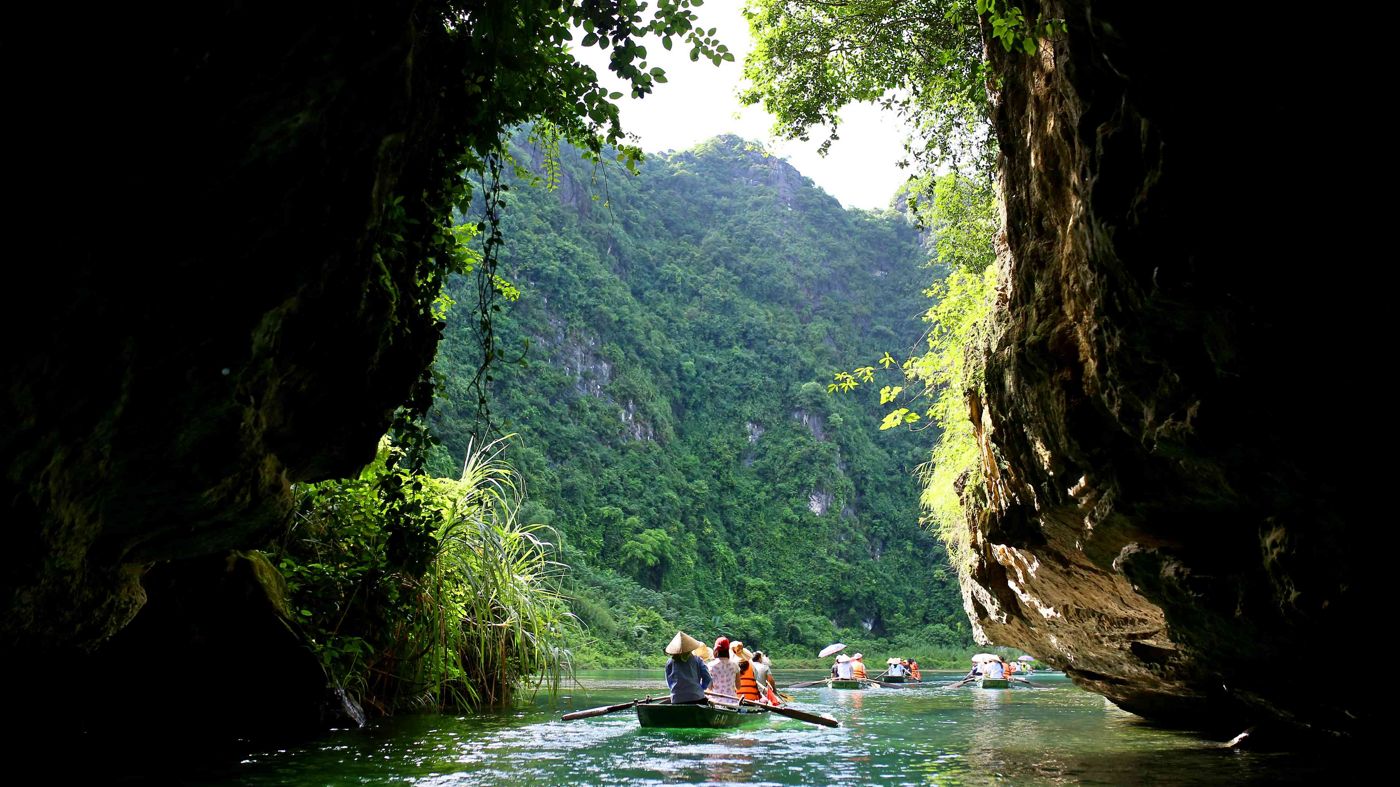
This reboot of the King Kong franchise could not attract more attention: its cast includes well-known actors such as Tom Hiddlestone, Samuel L.Jackson, etc. and the enormous budget of $185 million. Apart from high-quality actors and actresses, another appealing feature of Kong: Skull Island is its setting. Kong: Skull Island was filmed in Ninh Binh, Ha Long Bay, and Cat Ba Island in Quang Ninh (Northern Vietnam), and Quang Binh (Central Vietnam).
Ha Long Bay & Cat Ba Island
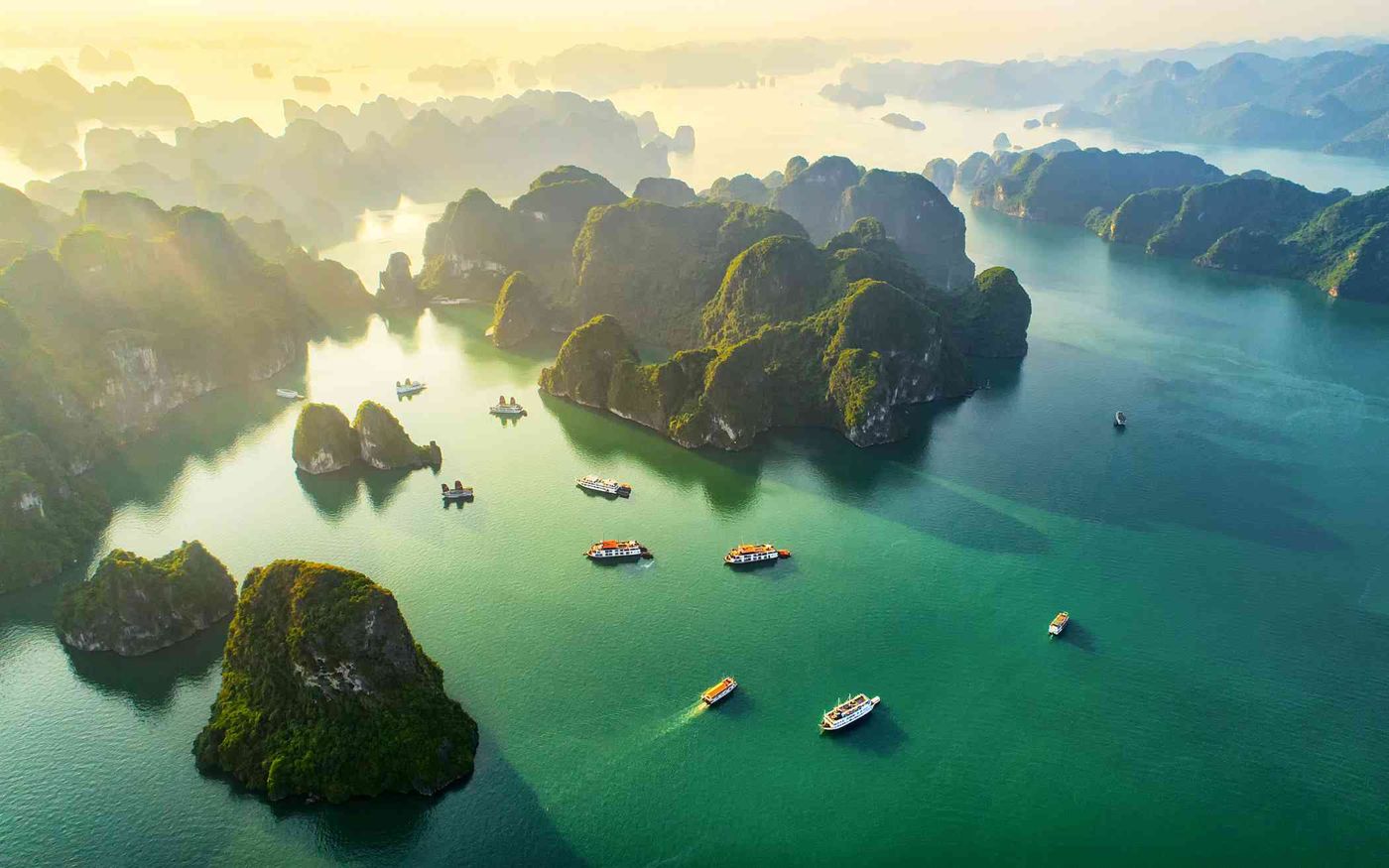
Ha Long Bay, located in the Gulf of Tonkin, consists of 1600 islands and islets formed in various shapes and sizes. Needless to say, Hạ Long Bay has been so popular that it is always the first destination that one can ever think of when deciding to take a trip to Quảng Ninh Province. Recognized twice as one of the world’s heritage sites in 1994 and 2000, Hạ Long Bay until this moment has been preserved and still retains its own unique and natural landscapes that will astonish every single visitor who seeks for true beauty that lies within the most ordinary place.
Van Long lake
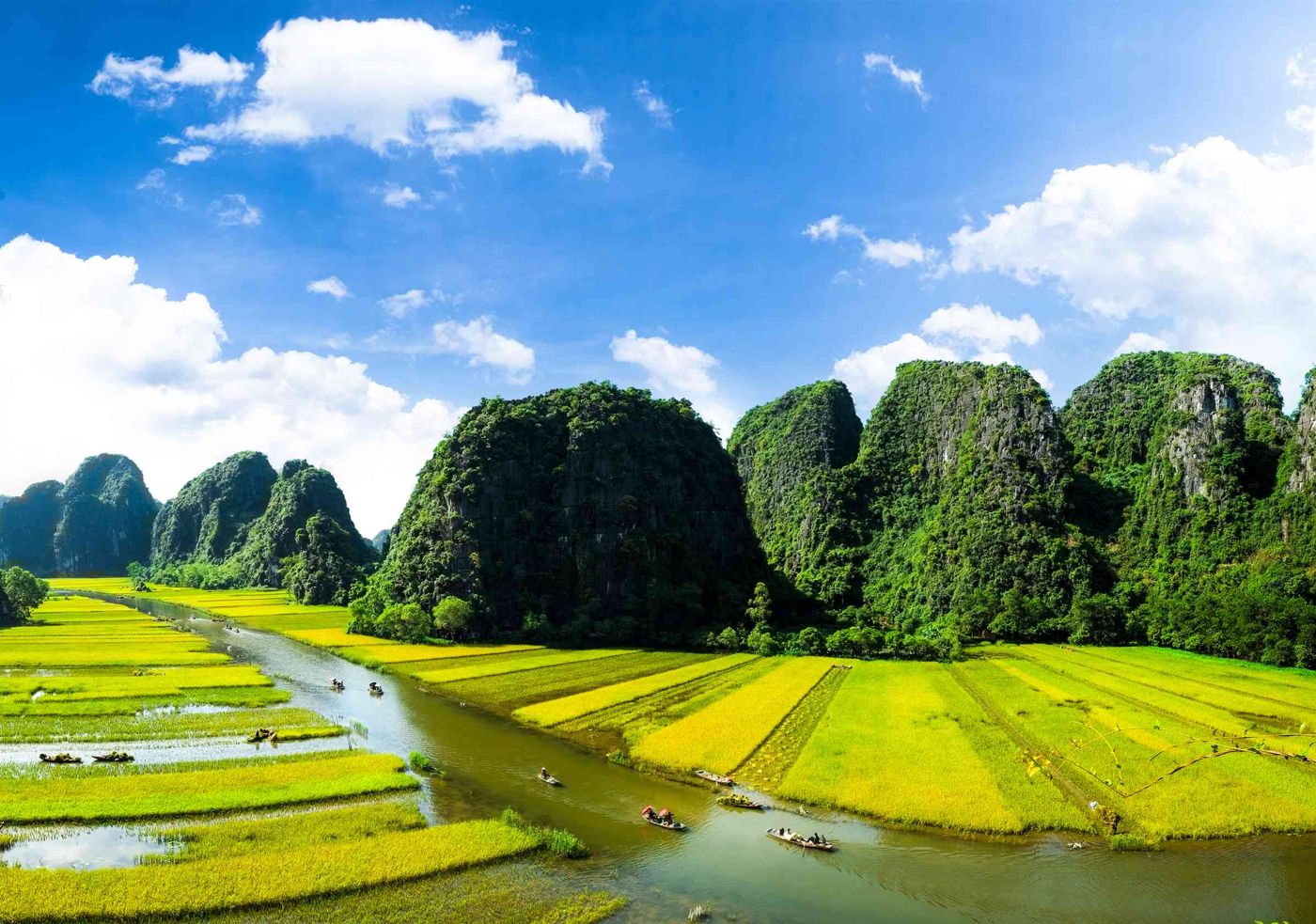
About 80km from the capital city of Hanoi, this location takes visitors about 2 hours on motorbike or car to get to. It was not created by Mother Nature but by the process of constructing a dike to prevent the Day River from flooding the area. However, its beauty is still appreciated by visitors and locals alike. With an area of 3500 ha, it is also considered the largest aquatic natural reserve all over the Red River Delta. The site can be accessed from the 1A National highway to Phu Ly, then Gian Khau fork and finally Gia Van commune, Gia Vien ward.
Van Long lake is known for its biodiversity as well as the picturesque scenery. The mountain ranges and caves, together with their reflections on the static water surface, take the visitors’ breath away. This site is also home to lots of endangered species in Vietnam, including the langur.
Trang An Landscape Complex
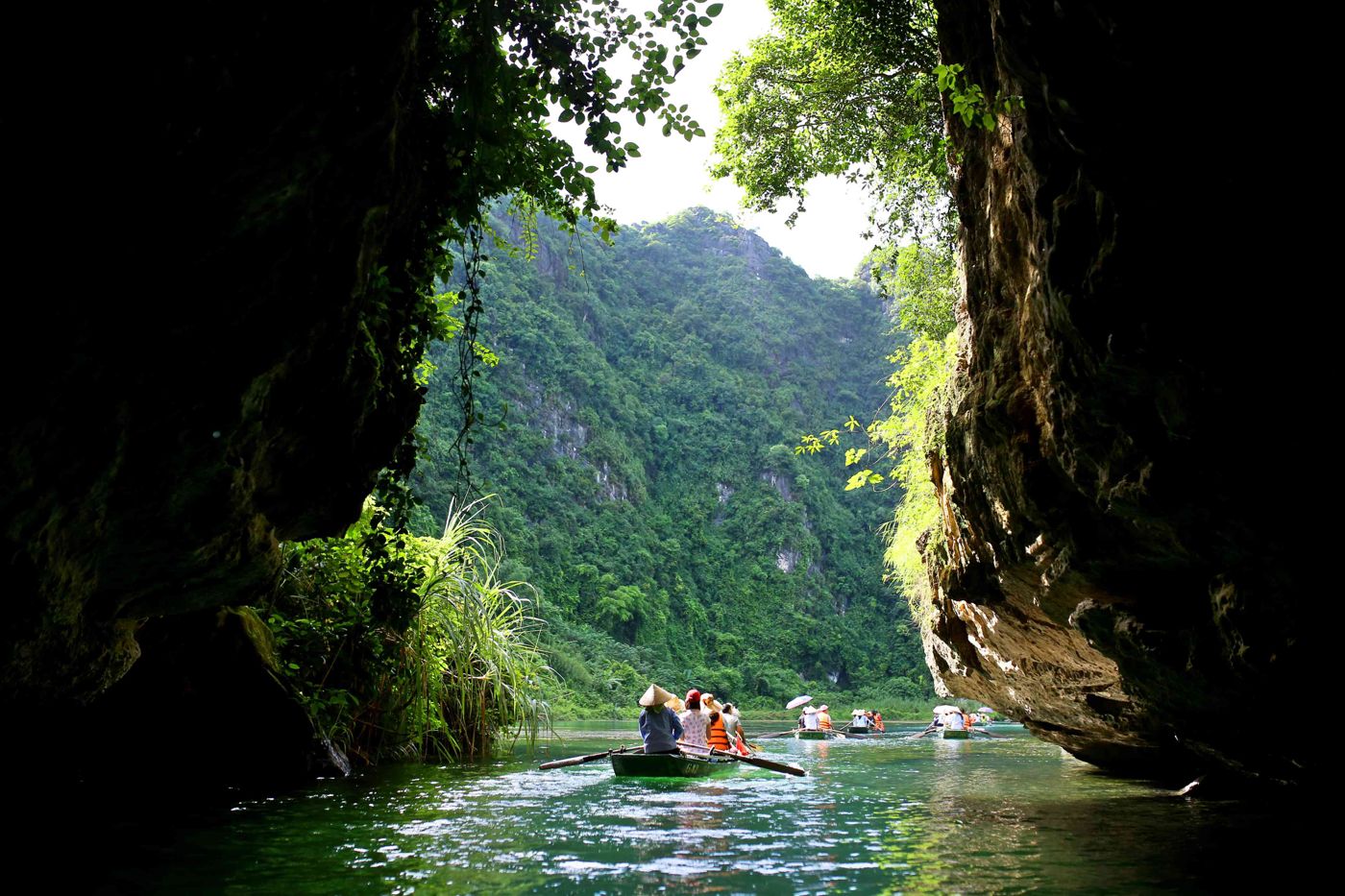
Another famous site present in Kong- Skull Island is Trang An, a location of great archeological and cultural significance. The Trang An Landscape Complex’s caves are known to have been inhabited for over 30,000 years by seasonal hunter-gatherers, who adapted to great landscape changes, including those in late Pleistocene and Holocene times. Furthermore, Trang An is famous for its geological properties: having been invaded by sea several times but still is emergent on land. The complex consists of 3 protected areas: Hoa Lư citadel cultural- historical area; Trang An- Tam Coc—Bich Dong Scenic area and Hoa Lư Special- Use Primary Forest.
Another breathtaking feature of Trang An is the karst tower landscape. The cone-shaped rock towers approximately 200 metres in height make Trang An a unique site. Deep down the cavern system, tourists can take a boat tour for a close view of the grottoes, which were formed through a long process of erosion.
Tam Coc and Bich Dong, situated in Van Lam village, Hoa Lu District, Ninh Binh province. Tam Coc, which means “three caves” in Chinese, have cloud-like stalagmites and stalactites of great geological meaning. They suggest these caves were underwater millions of years ago and gradually emerged from the water surface.
Tu Lan cave system
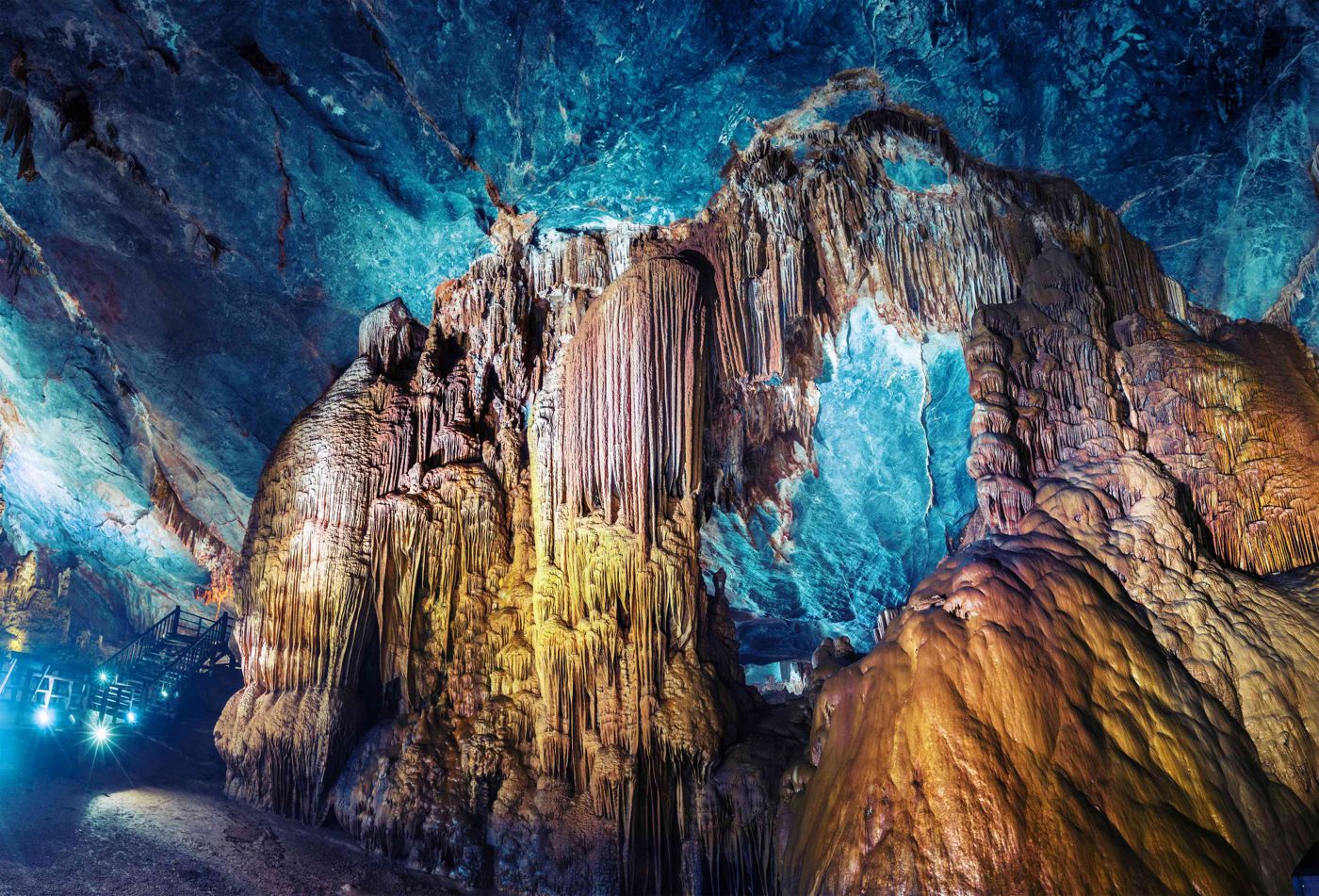
Consisting of more than 10 caves, Tu Lan cave system was first discovered in the early 1990s. As it has yet to attract as much attention as Sơn Đoòng caves, Tu Lan still retains its natural, intact beauty. This is a perfect location for adventurous travelers, as getting to the cave really means quite a lot of trekking and swimming. Most tours require decent swimming skills from tourists. The journey through the cave system can be split up into 3 days. Day 1 is mainly about warming up, you won’t need too spend much energy except for walking through a wood, exploring the first cave and trekking the Lom Com and Xoai mountains. Day 2 is much more challenging as tourists start with Ken cave- the deepest one in Tu Lan system and swim 200 meters against the flow to Kim cave. On day 3, tourists again must go against the flow to Hung Ton cave. The last checkpoint is Bi Mat cave- 15 meters down and only accessible through a ladder. The thrill of climbing down a ladder in such mysterious surroundings is the last checkpoint of your journey.
Tu Lan cave system is approximately 70 kilometers away from Phong Nha- Ke Bang National Park (Quang Binh Province) and next to Tan Hoa ethnic village. As it is surrounded by grass and corn fields, you may need instructions from locals our tourist help desks in the area.
Source: Internet


